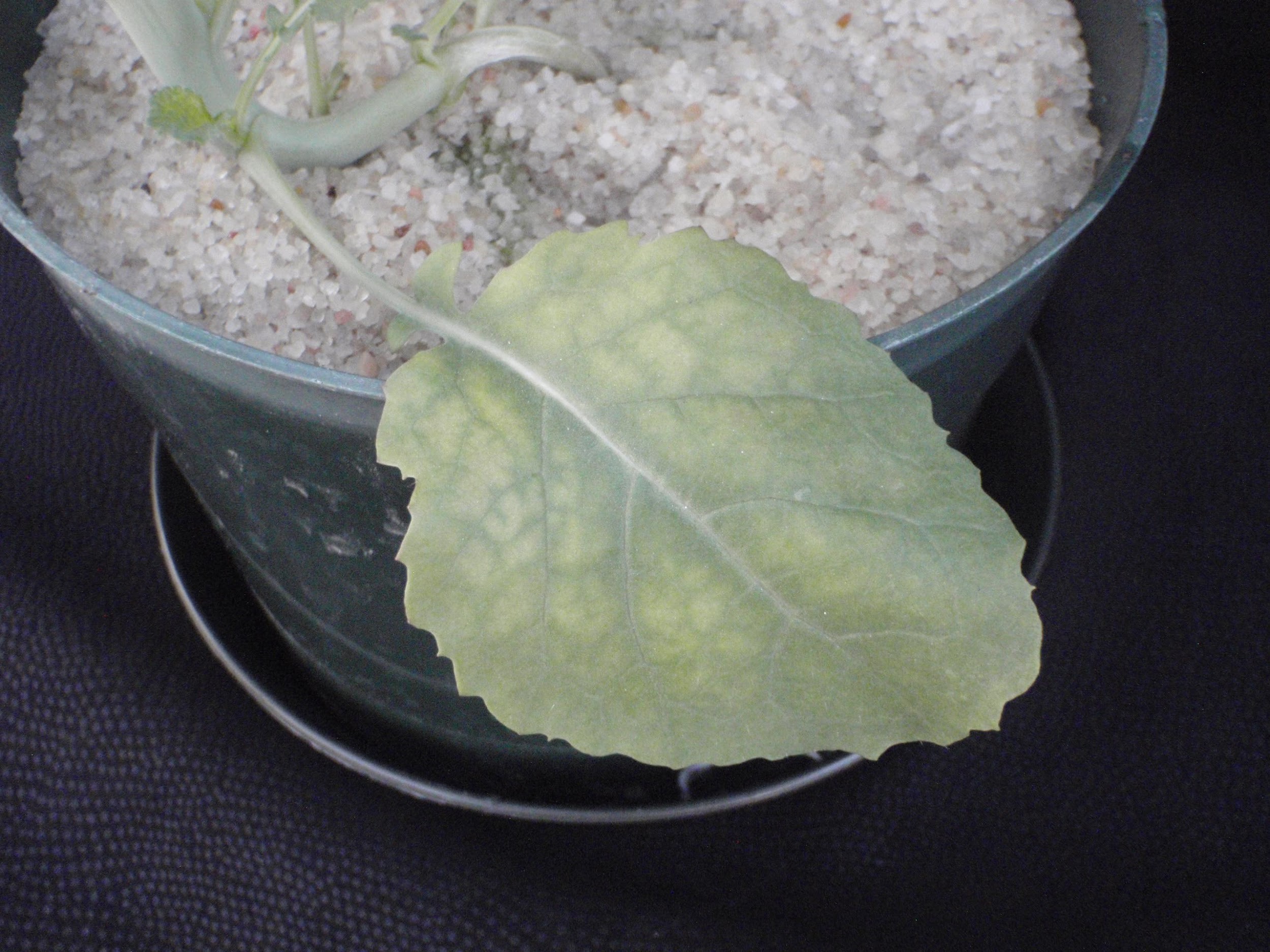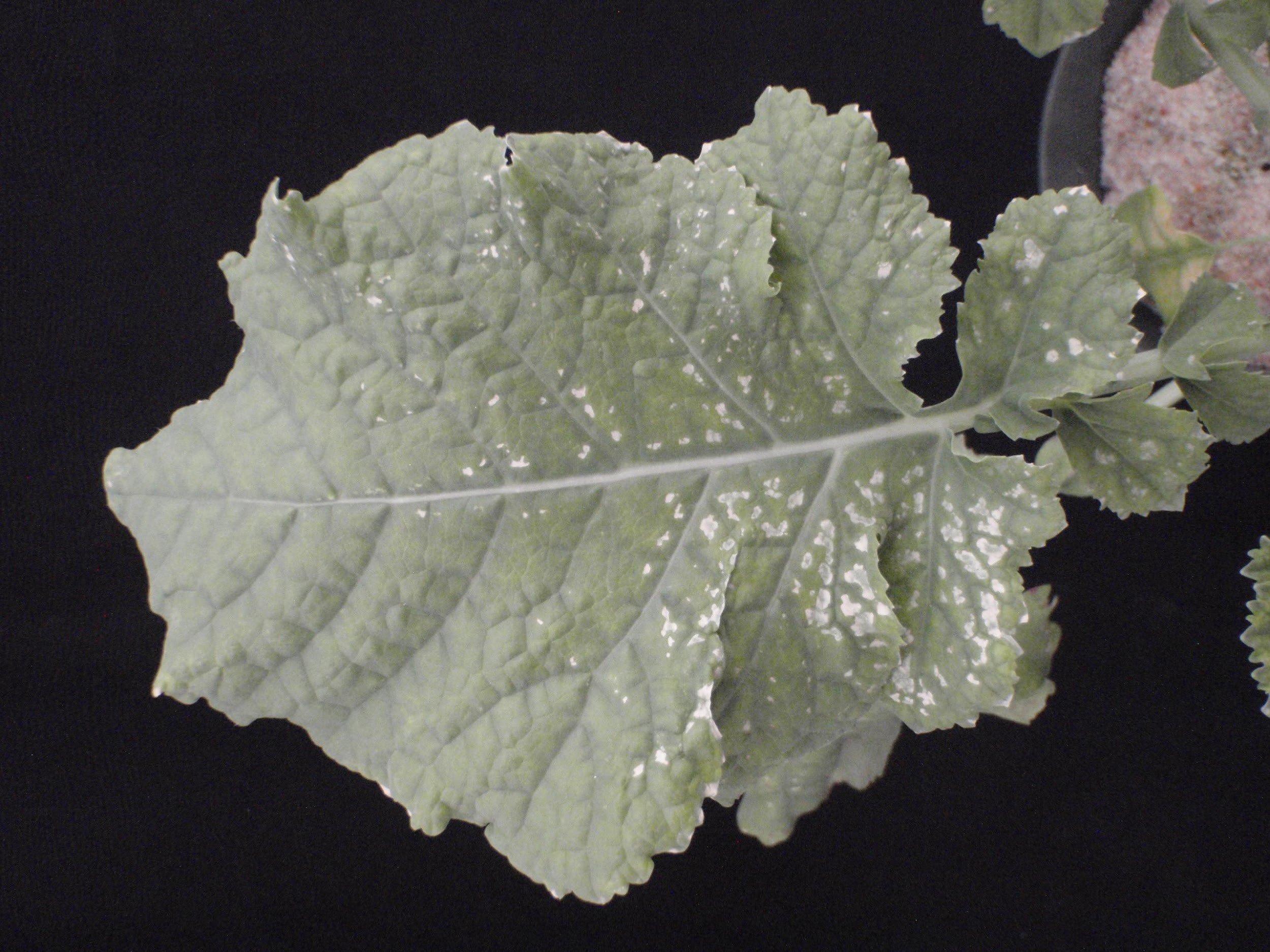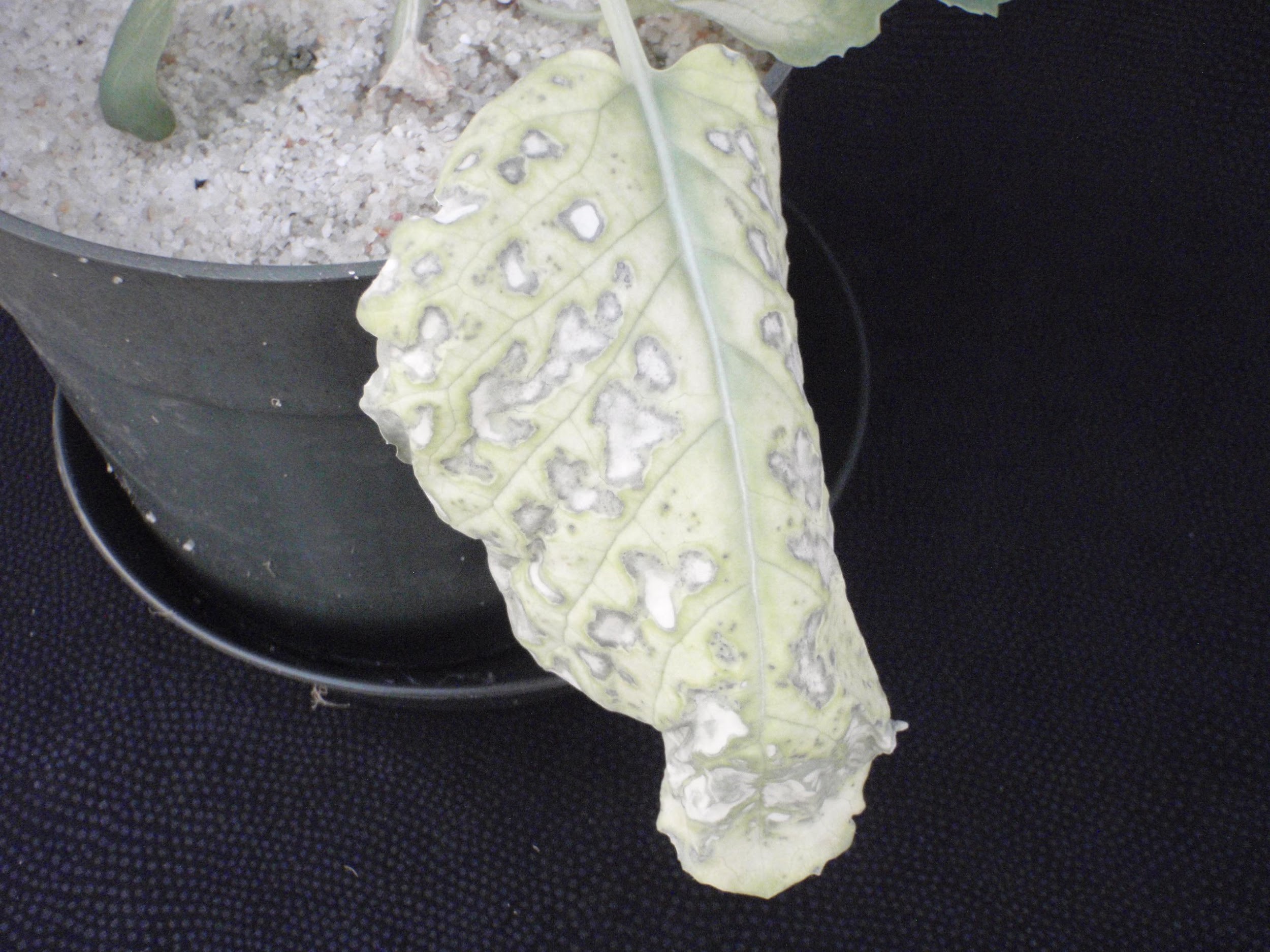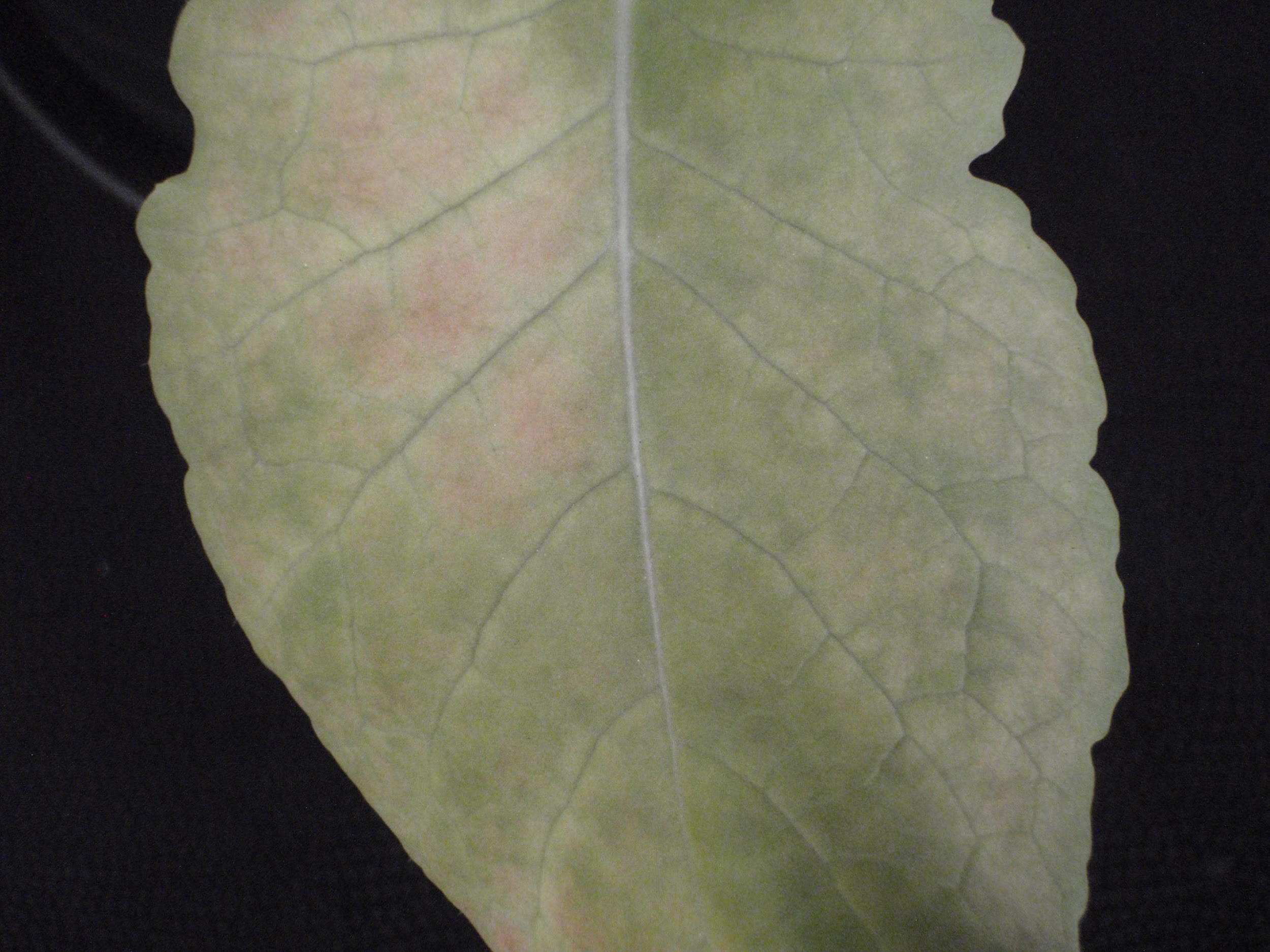Magnesium Deficiency of Carinata
go.ncsu.edu/readext?520102
en Español / em Português
El inglés es el idioma de control de esta página. En la medida en que haya algún conflicto entre la traducción al inglés y la traducción, el inglés prevalece.
Al hacer clic en el enlace de traducción se activa un servicio de traducción gratuito para convertir la página al español. Al igual que con cualquier traducción por Internet, la conversión no es sensible al contexto y puede que no traduzca el texto en su significado original. NC State Extension no garantiza la exactitud del texto traducido. Por favor, tenga en cuenta que algunas aplicaciones y/o servicios pueden no funcionar como se espera cuando se traducen.
Português
Inglês é o idioma de controle desta página. Na medida que haja algum conflito entre o texto original em Inglês e a tradução, o Inglês prevalece.
Ao clicar no link de tradução, um serviço gratuito de tradução será ativado para converter a página para o Português. Como em qualquer tradução pela internet, a conversão não é sensivel ao contexto e pode não ocorrer a tradução para o significado orginal. O serviço de Extensão da Carolina do Norte (NC State Extension) não garante a exatidão do texto traduzido. Por favor, observe que algumas funções ou serviços podem não funcionar como esperado após a tradução.
English
English is the controlling language of this page. To the extent there is any conflict between the English text and the translation, English controls.
Clicking on the translation link activates a free translation service to convert the page to Spanish. As with any Internet translation, the conversion is not context-sensitive and may not translate the text to its original meaning. NC State Extension does not guarantee the accuracy of the translated text. Please note that some applications and/or services may not function as expected when translated.
Collapse ▲From the Field – Agronomy Notes
In this Brassica carinata (Ethiopian Mustard) research update, we highlight the symptoms of magnesium deficiency. These images are part of a project by the Southeast Partnership for Advanced Renewables from Carinata (SPARC) to develop a diagnostic series for the identification of nutrient disorders of Carinata. Carinata is an exciting new crop in the Southeast used for a wide variety of primary and secondary agricultural products including cover crops, feedstock, high protein meal, and jet fuel. It is similar in management to canola given both canola and carinata are winter annual Brassica oilseed crops. However, carinata oil is not edible.
Diagnostic Information:
Magnesium (Mg) is the central element in the chlorophyll molecule, so initial Mg deficiencies often appear as interveinal chlorosis. Since it can be broken down and translocated, magnesium is a mobile element and will move from the older lower foliage to the newer growth where it is needed. Magnesium deficiency stress manifested early in the course of the experiment. As such, magnesium fertilizer levels should be monitored closely.
Magnesium deficiency first manifests as a slight interveinal chlorosis of the lower foliage (Fig. 1). This interveinal chlorosis can be accompanied by necrotic lesions over the leaf surface (Fig. 2). These lesions will have necrotic brown centers and may be accompanied with a darker brown margin (Fig. 3).
As magnesium deficiency proceeds from beginning to intermediate stages, the interveinal chlorosis becomes more pronounced in color and contrast. This color change can result in certain interveinal regions becoming slightly purple to pink (Fig. 4). The underside of the leaf will have a very stark and bright purple to red coloration between the veins (Fig. 5).
If allowed to continue, magnesium deficiency will eventually result in the necrosis of lower foliage and eventual abscission. To ensure proper diagnosis the above material should be used in conjunction with a leaf tissue sample and/or field test.

Figure 1: The beginning symptoms of magnesium deficiency will manifest as an interveinal chlorosis of the lower foliage as Mg is translocated to newer tissues where it is needed. Note that the interveinal chlorosis is more evident along the base of the leaf. ©2018 Forensic Floriculture

Figure 2: Note the progressive symptomology in the form of necrotic regions. These will appear as angular, tan lesions. These will be concentrated along the base of the leaf and will expand outward toward the leaf tip as deficiency becomes more severe. ©2018 Forensic Floriculture

Figure 3: The above photo shows intermediate magnesium deficiency symptoms of the lower foliage. Note that the smaller necrotic regions shown in Figure 2 have expanded and progressed further toward the leaf tip. Note the darker brown regions surrounding the tan necrotic center. These necrotic regions resemble a dark, iris-like structure surrounding the necrotic tan regions. ©2018 Forensic Floriculture

Figure 4: Magnesium deficiency may also manifest as a reddening or purpling of the leaf surface. This reddening will precede the appearance of the necrotic regions. On the top of the leaf, the purple coloration may appear weak, but on the underside the coloration will be stark and interveinal. See Fig. 5. ©2018 Forensic Floriculture

Figure 5: In the leaf above, advanced stages of magnesium deficiency can be seen. Note the severe purpling or reddening of the interveinal regions of the underside of the leaf. Also note the necrotic tan leaf margin and the darker brown necrotic iris as seen in figure 3. ©2018 Forensic Floriculture



Key Contact Central East:
Dr. Angela Post, NC State Univ. Department of Crop and Soil Sciences – angela_post@ncsu.edu
Dr. Carl Crozier, NC State Univ. Department of Crop and Soil Sciences – ccrozier@ncsu.edu
Key Contact South East:
Dr. Michael Mulvaney, UF/IFAS West Florida Research and Education Center – m.mulvaney@ufl.edu
Primary Authors: Paul Cockson, Dr. Carl Crozier, Dr. Ramon Leon, Dr. Michael Mulvaney, Dr. Angela Post, and Dr. Brian E. Whipker
Project Team: NC State Univ. personnel Paul Cockson (NC State B.S. student in Agroecology), Ingram McCall (Research Technician in Horticultural Science at NC State), Dr. Carl Crozier (Professor and Extension Specialist at NC State), Dr. Ramon Leon (Assistant Professor at NC State), Dr. Angela Post (Assistant Professor and Extension Specialist NC State), and Dr. Brian Whipker (Professor of Floriculture and Plant Nutrition in Horticultural Science at NC State). Univ. of Florida personnel Dr. Michael Mulvaney (Cropping Systems Specialist at UF/IFAS West Florida Research and Education Center.
Suggested Citation:
Cockson, P.1, C. Crozier1, R. Leon1, M. Mulvaney2, A. Post1, B. Whipker1. 2018. Magnesium Deficiency of Carinata. North Carolina St. Univ. Small Grains Portal – From the Field-Agronomy Notes.
1North Carolina State University
2University of Florida
Funding and Acknowledgments:
Funding for this work/study was received through USDA-NIFA Bioenergy Coordinated Agricultural Project (CAP). This material is based upon work that is supported by the National Institute of Food and Agriculture, U.S. Department of Agriculture.





